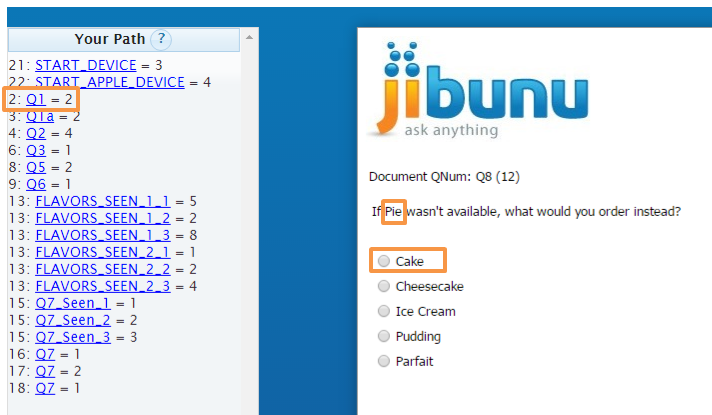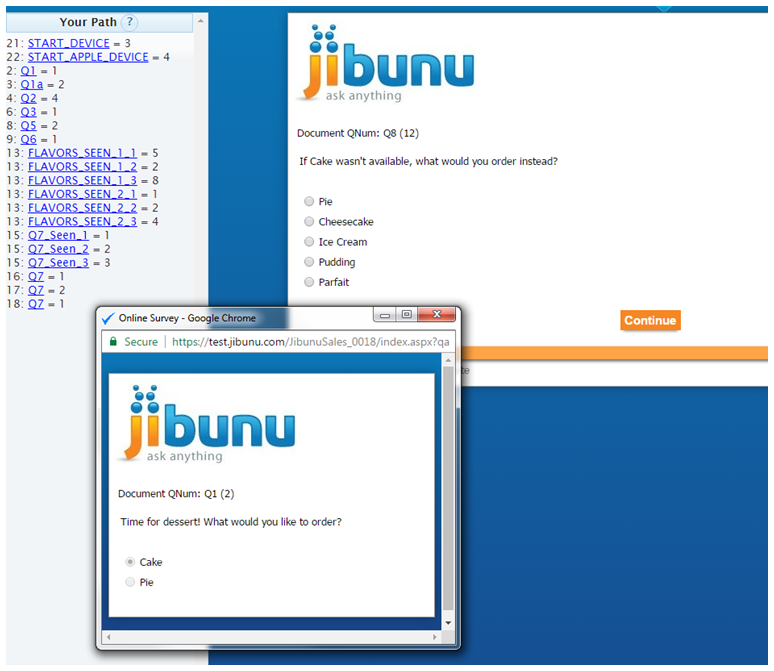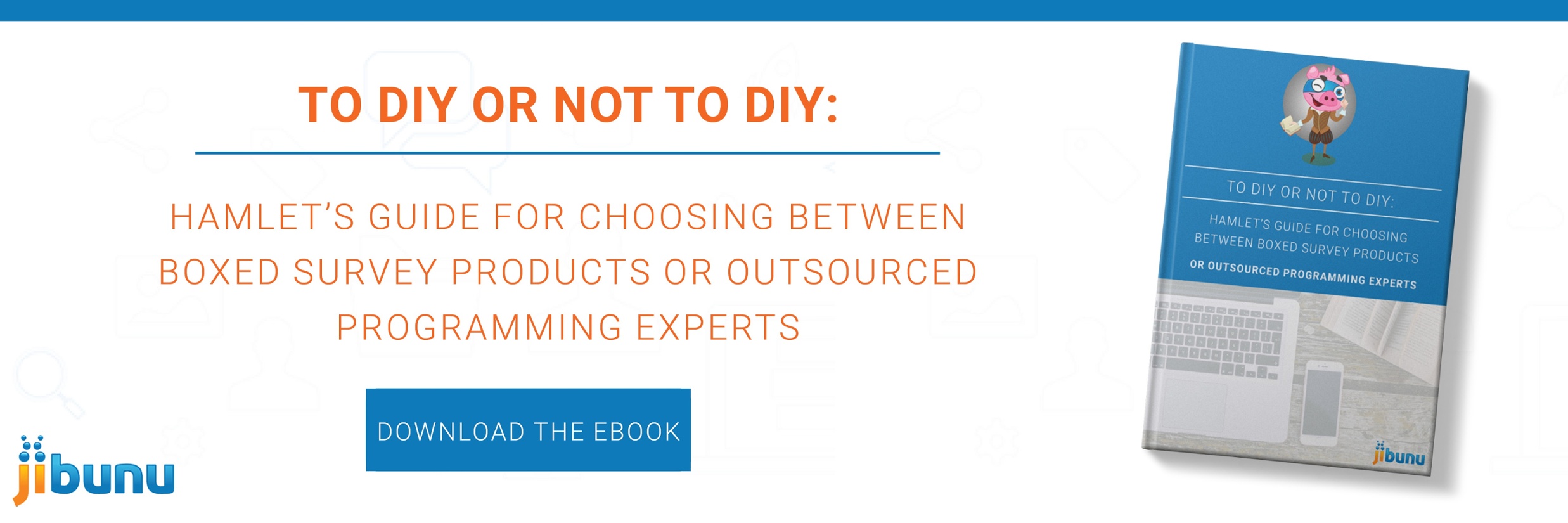What’s your current process when you test surveys full of logic? Do you pull out a pad and a pen to write down every answer you give as you give it? Do you ask yourself, “What if there is a question later on that is conditional on how favorably I rate bananas in this fruit grid?” Do you, in an effort to save the rainforests, rely on your memory? Sure, you could try to remember every answer you gave, but sometimes, when you reach a question where the logic is based on something much earlier in the study, it can feel like your memory was wiped.

There are many tools that can help you make QA a breeze. Tools like Jibunu’s CATE (Client Adjustable Testing Environment) have many features that can save time and frustration (and trees) during your testing process. Let’s explore how you can take advantage of one of these.
CATE has a history side bar that can be toggled to show which questions you have already seen and the values you answered. If you actually want to see how the question looked when you answered it, clicking on the question number will pull up a read-only version of the question. That way if your questionnaire uses text instead of values to indicate logic (a frowned upon practice for another post), you can see that “5” means you find bananas extremely favorable.
In the example survey below, the last question (Q8) has logic based on the very first question (Q1). Both the question text and the first answer option have “show/hide” logic based on the answer previously given.
Logic as shown in the Questionnaire

With the Path History available on the left while testing, you can see the value that you selected in Q1=1. This allows you to confirm the logic is correct with a quick glance to the left.
If Q1=1

If Q1=2

You can also click on Q1, which will bring up the actual question as it was seen so you can verify that Cake was selected, so the question correctly says “If Cake wasn’t available…” and correctly has Pie as the first answer option. Piece of pie right? Or is it easy as cake? You can see how having the correct word is important.
If Q1=1

If Q1=2

Having a “Path History” helps reduce time and errors during testing. It also removes the need for a good memory or a notebook. It’s like a little assistant keeping track for you so you don’t have to. Maybe one day we can have CATE bring you coffee in the morning and pick up your dry cleaning too. That’s a work in progress.
Want to change a previous answer without starting over? Stay tuned for our post on previous answer editing, coming soon to a browser near you!

